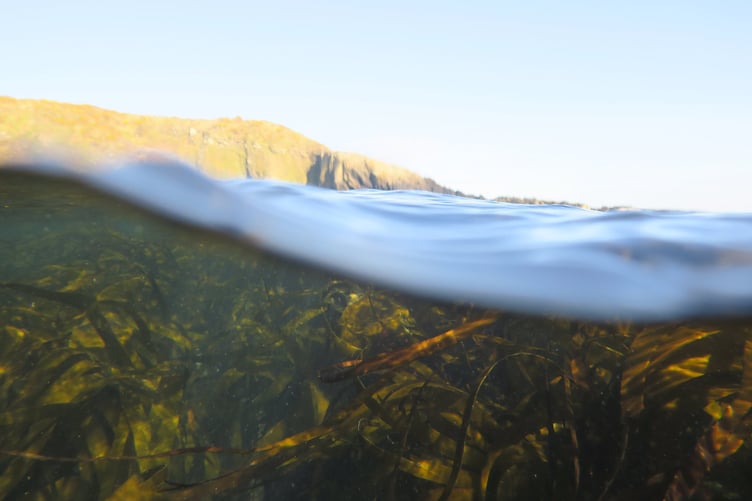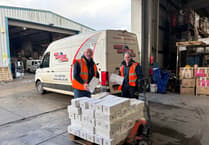As an island community we depend on the sea for so much - but it is also easy to take it for granted. In a monthly column, Dr Lara Howe, marine officer with the Manx Wildlife Trust, and Dr Peter Duncan, senior marine environment officer at DEFA, explore this underwater world and the lives of some of those who work there.
Did you know that 85% of the Isle of Man’s territory beneath the waves? I wish more people knew – we’re more sea than land.
In February 2022, the Manx Blue Carbon Project set sail on a three-year mission to better understand our sea - uncovering how it can help us respond to changes in our climate, and restore lost marine life. Just over halfway through the project, we’re giving you a peek at our progress.
What is Blue Carbon?
You’ve probably heard about carbon stored in trees, plants, and soil – helping reduce climate change by absorbing carbon from the air.
Well, blue carbon is the carbon superhero of our ocean, stored in seagrass meadows, salt marshes, kelp forests, and other underwater habitats – even glorious marine mud.
These remarkable ecosystems are also home to marine creatures, protect our coastal communities from storms, clean our air and water, and are nursery grounds for fish and shellfish, supporting and fishing community and food security - impressive.
The Manx Blue Carbon Project
We’re finding out where blue carbon is stored and how much; how these ecosystems contribute to our safe and healthy life on land; the rich diversity of marine life they support; and how to best look after these systems within our busy Manx sea.
A Unified Approach
Our small, dedicated team are leading the charge - but we can’t do this alone.
Cutting-edge research is being carried out by our scientific partners at the National Oceanography Centre, Swansea University, and Bangor University, and we’re collaborating with Manx Wildlife Trust to better understand our seagrass.
To ensure the Isle of Man takes a joined-up approach to looking after our blue carbon, we’re working with experts across different sectors through the Manx Blue Carbon Working Group.
Our Journey So Far
Our adventure started with our science partners using aerial drones and underwater scanners to map out the seagrass meadows and kelp forests that hug our island’s shores.
We’ve collected samples – called sediment cores - from our saltmarsh and the muddy seafloor off our west coast, to see how much carbon is stored there.
There is more seagrass on our east coast than previously thought – including patches newly discovered by Manx Wildlife Trust and Seasearch divers. Our salt marshes are small-but-mighty carbon treasure chests, storing lots of carbon in the muddy patches at Poyll Dooey, Port Cornaa and Langness.
The muddy seabed to the west of the island covers such a huge area that it’s likely our biggest blue carbon store.
Spreading the Word
It’s not just about the science.
We also want to share the wonders of our sea with our community. We’ve run workshops on the wonders of seaweed with 150 children.
A beautiful short film was made about the project called ‘Sleih ny Marrey: People of the Sea’.You can watch it on the Government YouTube channel and at the Sea Terminal.
What’s on the Horizon?
There’s more for us to explore before 2025.
We’ll continue investigating our blue carbon, everything it does, and the incredible sea life it supports.
Most importantly, we’re creating a plan to look after it, working with our incredible sea to keep it, and our island, thriving for generations to come. We’re discovering the hidden treasures of our seas and we can’t wait to share more with you soon. Read the full midway report: www.netzero.com/bluecarbon
The Manx Blue Carbon Project is funded by the Climate Change Transformation Team and hosted by DEFA. Email [email protected]



.jpg?width=209&height=140&crop=209:145,smart&quality=75)
